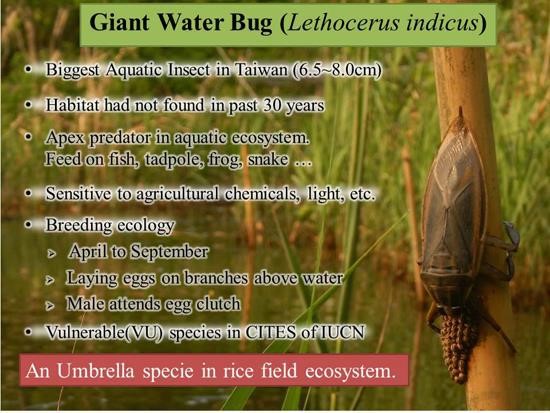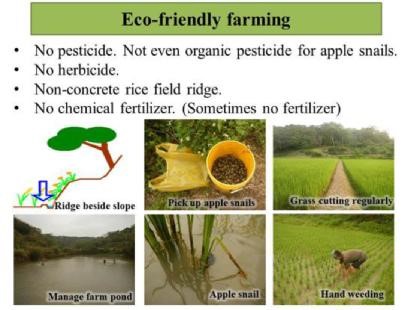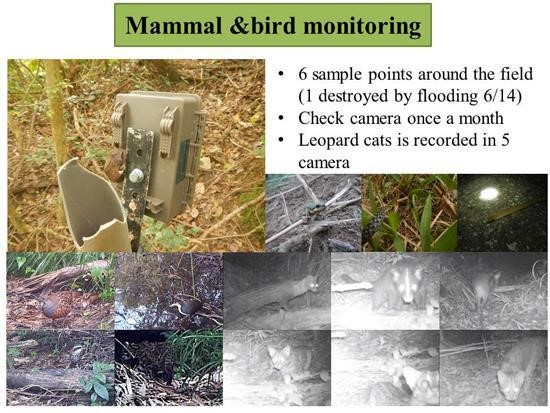Conserving the giant water bug (Lethocerus indicus) by eco-friendly farming
23.05.2018
-
SUBMITTED ORGANISATION :
-
Observer Ecological Consultant Company
-
DATE OF SUBMISSION :
-
23/05/2018
-
REGION :
-
Eastern Asia
-
COUNTRY :
-
Chinese Taipei (Miaoli County)
-
SUMMARY :
-
The giant water bug (Lethocerus indicus) is a species native to Taiwan, which is facing extinction owing to environmental change. We found the insect and eggs in a pond next to a paddy field in Tongxiao Township, Miaoli County. To conserve this rare water bug, we encouraged the farmers to apply eco-friendly farming methods by contract farming and community support. Many practices are being conducted to achieve sustainable development and the Satoyama Initiative in local agricultural production, such as monitoring the leopard cat and the small Indian civet, improving pond quality as a habitat for the giant water bug, and recovering rare plants along footpaths between paddy fields.
-
KEYWORD :
-
Giant water bug, Lethocerus indicus, eco-friendly farming
-
AUTHOR:
-
Wang, Zheng-An and Chen, Po-Hao, Observer Ecological Consultant
-
LINK:
Summary Sheet
The summary sheet for this case study is available here.












